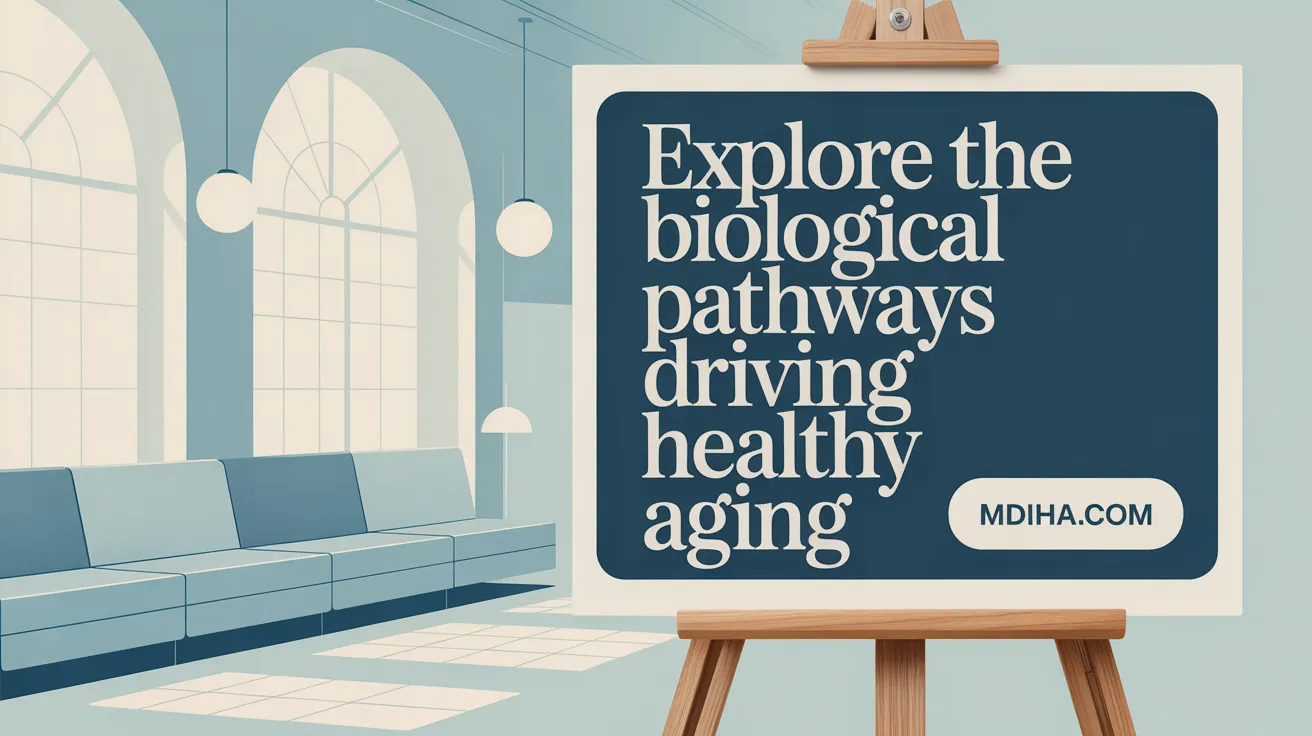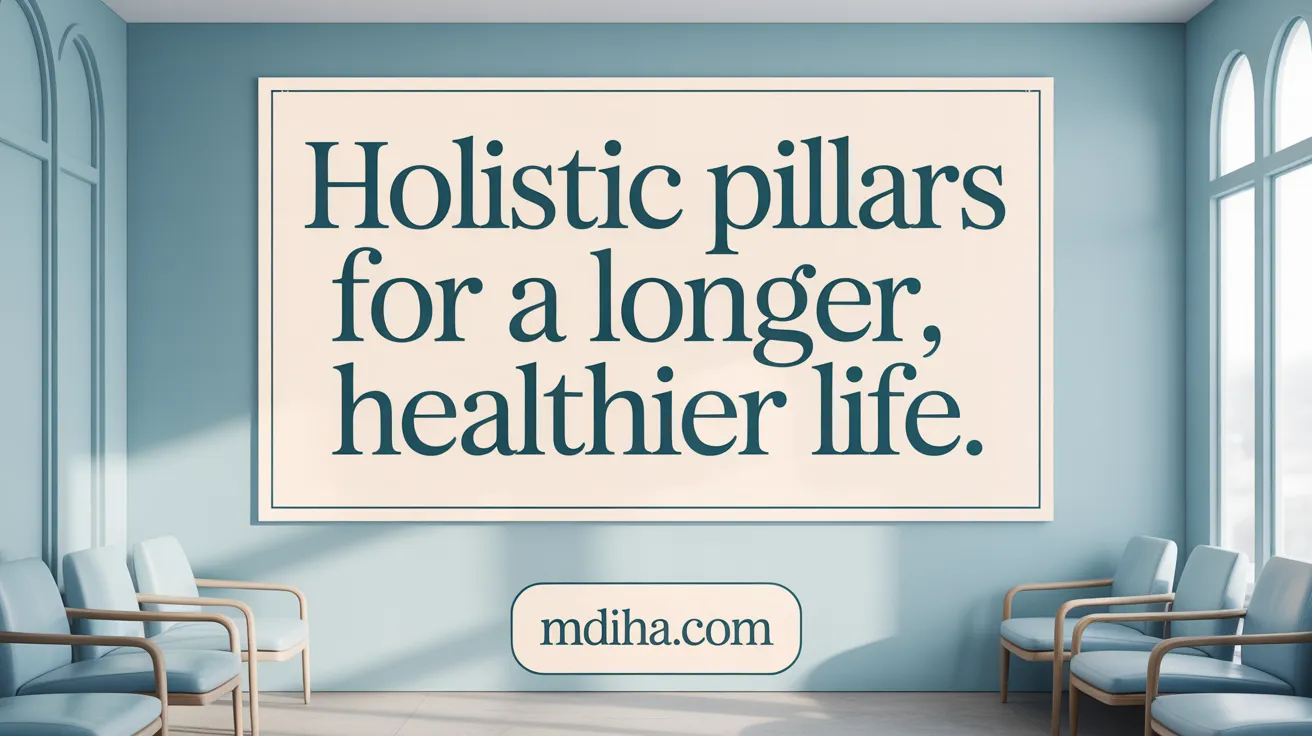Understanding Healthspan: Beyond Just Living Longer
While lifespan measures how long we live, healthspan focuses on the quality of those years—living free from chronic diseases and disabilities. In the context of rapidly advancing scientific knowledge and medical innovations, extending healthspan has become a primary goal to ensure not only longer life but more vibrant, functional years. This article explores the biological underpinnings of aging, evidence-based lifestyle strategies, and cutting-edge personalized approaches for designing customized plans to optimize healthspan.
Defining Healthspan vs. Lifespan and the Biological Foundations of Healthy Aging

What is healthspan and how is it different from lifespan?
Healthspan refers to the years during which an individual remains healthy, active, and free from significant chronic diseases or disabilities. It emphasizes not just living longer but living better, with quality of life maintained over time. In contrast, lifespan is the total number of years a person lives from birth to death. While increasing lifespan has been a primary focus historically, recent research underscores the importance of extending healthspan to ensure that added years are healthy and productive.
A longer lifespan can occur with a relatively short healthspan if chronic illnesses or functional declines happen early. Conversely, a focus on healthspan aims to delay or prevent these age-related conditions, thereby reducing healthcare burdens and enhancing life quality in later years. Efforts in aging science are increasingly targeting the biological processes that drive aging, aiming to extend healthy years rather than just total lifespan. Learn more in a practical approach to healthspan medicine.
Biological pathways influencing aging, such as cellular senescence, mitochondrial function, and genetic regulation
Aging is driven by intricate biological processes affecting cells and tissues. Central to these are cellular senescence, mitochondrial dysfunction, and genetic regulation.
Cellular senescence involves cells losing the ability to divide and function properly, often releasing inflammatory factors that contribute to age-related decline. Accumulation of senescent cells accelerates tissue deterioration and disease.
Mitochondrial health is vital as these organelles produce the energy needed for cellular functions. With age, mitochondrial efficiency declines, leading to reduced energy production and increased oxidative stress.
Genetic regulation also plays a critical role. Pathways such as telomere maintenance, which protects chromosome ends, and DNA repair mechanisms influence cellular aging. Additionally, gene expression changes, driven by epigenetic modifications, can activate or suppress aging-related genes. For an in-depth review, see longevity medicine and biological aging processes.
Scientific mechanisms and pathways that shape healthspan extension
Research highlights several key pathways that influence aging and healthspan. The mTOR pathway, for example, regulates cell growth and autophagy—the process by which cells clean out damaged components. Inhibitors like rapamycin have shown promise in extending lifespan and reducing age-related pathologies in preclinical models.
The insulin/IGF-1 signaling pathway affects growth and metabolism and has been linked to longevity across species. Modulating this pathway through diet, drugs, or genetic means can delay aging.
Epigenetic modifications, including DNA methylation and histone changes, influence gene activity without altering DNA sequence. These changes can be manipulated to reverse aspects of biological aging, as seen in the development of genetic medicine and senolytic therapies for healthspan extension.
Evidence-Based Lifestyle Factors and Holistic Pillars Supporting Healthspan

What are the evidence-based lifestyle factors and strategies that can improve and extend healthspan?
Research consistently shows that adopting healthy lifestyle choices significantly contributes to extending healthspan—the years lived in good health free from chronic disease. Central to these strategies is the Mediterranean-style diet, which emphasizes the consumption of vegetables, fruits, nuts, whole grains, legumes, and fish. Such a plant-based, nutrient-rich diet has been linked to a reduced risk of cardiovascular disease, cancer, and overall mortality.
Equally important is engaging in regular physical activity. Current guidelines recommend at least 150 minutes of moderate exercise each week, with added resistance or strength training sessions. These activities support heart health, preserve muscle mass, improve metabolic flexibility, and bolster cognitive function.
Sleep quality plays a vital role in aging well. Prioritizing 7 to 8 hours of restorative sleep through routines like consistent bedtimes, reducing screen time, and creating a conducive sleep environment helps mitigate age-related decline.
Managing stress through techniques such as meditation, yoga, deep breathing exercises, and maintaining social connections enhances mental resilience. Building emotional support networks and engaging in mentally stimulating hobbies also foster cognitive health and emotional well-being.
Avoiding harmful substance use, particularly tobacco and excessive alcohol, further supports longevity. In addition, regular health monitoring of blood pressure, blood sugar, and cholesterol enables early intervention, reducing the risk of diseases that compromise healthspan.
Long-term adherence to these lifestyle factors from early in life, combined with a sense of purpose and community involvement, creates a powerful foundation for healthy aging. Such comprehensive strategies not only extend lifespan but also ensure quality of life is preserved into advanced age.
What holistic health pillars support healthy aging, such as nutrition, exercise, sleep, mental health, and social engagement?
A holistic approach to aging integrates multiple interconnected pillars of health that collectively promote well-being. Nutrition remains fundamental; emphasizing balanced, nutrient-dense diets like the Mediterranean style supports cellular health, immune function, and metabolic stability.
Regular physical activity, including both aerobic exercises and resistance training, is essential for maintaining mobility, strength, and cardiovascular health, thereby reducing frailty with age.
Sleep quality is another cornerstone—consistent, restful sleep rejuvenates the body and brain, reducing inflammation and supporting cognitive functions crucial for independence.
Mental health and cognitive engagement such as learning new skills, social activities, and mindfulness practices foster resilience against age-related decline. Having a purpose or spiritual practice adds emotional stability, reduces stress, and enhances life satisfaction.
Social engagement through community involvement, family interactions, and meaningful relationships has proven to lower risks of mental decline and physical illnesses. Together, these pillars form an integrated framework that addresses the physical, mental, social, and spiritual needs essential for thriving during aging.
Implementing these strategies with consistency and early in life can significantly influence healthspan, allowing individuals to enjoy an active, healthy, and fulfilling old age.
Personalized Healthspan Extension: Diagnostics, Biomarkers, and Customized Interventions
 Advancements in personalized medicine enable tailored strategies that significantly extend healthspan by focusing on an individual’s unique biological profile. Modern diagnostics encompass comprehensive evaluations such as blood panels data, full-body MRI insights, VO2 max testing, and DEXA scan analysis. These tests generate detailed data points—over a thousand in some cases—that capture cardiovascular health, metabolic function, body composition, and overall physiological resilience.
Advancements in personalized medicine enable tailored strategies that significantly extend healthspan by focusing on an individual’s unique biological profile. Modern diagnostics encompass comprehensive evaluations such as blood panels data, full-body MRI insights, VO2 max testing, and DEXA scan analysis. These tests generate detailed data points—over a thousand in some cases—that capture cardiovascular health, metabolic function, body composition, and overall physiological resilience.
Integral to this approach are biomarkers that quantify biological aging. DNA methylation clocks (e.g., DNAm PhenoAge), telomere length, and inflammation markers like CRP and IL-6 serve as early indicators of aging-related decline. By analyzing these biomarkers, clinicians can assess an individual’s biological versus chronological age, enabling proactive interventions.
Genetic medicine further enhances personalization. Gene editing technologies, such as CRISPR/Cas9, and therapies targeting senescent cells—senolytics—and gene replacement strategies are at the forefront. Cutting-edge delivery platforms, including proteo-lipid vehicles, optimize the targeting of these therapies, reducing immune reactions and increasing efficacy.
Designing a personalized plan begins with detailed analysis of biomarker and genetic data, alongside physiological measures. Tailored nutrition plans based on lipid profiles, insulin sensitivity, and genetic predispositions ensure optimal dietary interventions. Exercise regimens are similarly individualized, with assessments like grip strength and movement analysis guiding protocols that emphasize strength, stability, and metabolic flexibility.
Pharmacological interventions, including medications like metformin, NAD+ precursors, and emerging anti-aging therapies, are integrated into the plan based on individual risk factors and lab results. Supplements and medications are regularly monitored and adjusted as biomarkers evolve.
Ongoing monitoring through repeated diagnostics and biomarker assessment allows for dynamic plan adjustments. AI-assisted data analysis and insights from large-scale studies, like those supported by ARPA-H, facilitate continuous refinement. This adaptive approach ensures that each person’s health trajectory is optimized, effectively delaying disease onset and extending healthspan tailored to their unique biology.
Innovative Research, Technology, and Programs Paving the Way for Future Healthspan Extension
Current exploration in healthspan extension involves a variety of cutting-edge research projects, technological innovations, and influential programs. Scientists are investigating novel approaches like senolytics therapies, which target and eliminate senescent cells responsible for aging-related decline, and NAD+ boosters, which aim to restore mitochondrial function and cellular energy. Advanced gene editing techniques such as CRISPR are being explored to modify genetic pathways associated with aging, while stem cell therapies offer regenerative potential for tissue repair.
Another major focus is the development and validation of aging biomarkers, including epigenetic clocks and telomere length assessments. These biomarkers can provide more accurate measures of biological age, allowing personalized health interventions. Although still in the research phase, these tools hold promise for early detection and targeted treatment of age-related conditions.
Technological advancements support these innovations through wearable devices, AI-powered diagnostics, and digital health platforms. These tools enable continuous health monitoring, personalized prevention strategies, and real-time data analysis, facilitating more precise and proactive care.
At the institutional level, government agencies and research organizations are launching significant programs. For example, ARPA-H's PROSPR initiative aims to identify early biomarkers of aging and develop therapeutics to delay or reverse age-related diseases. The PATH project, led by the Buck Institute, is working to predict chronic disease risks and create diagnostic tools to facilitate early intervention.
Globally, collaborative efforts such as the UK's 'Our Future Health' and initiatives by international organizations foster international data sharing, ethical research practices, and development of equitable access to longevity technologies. These collaborations aim to bridge disparities and promote inclusive healthspan extension solutions.
Despite these exciting advances, challenges remain. Validating aging biomarkers for clinical use requires rigorous scientific standards and regulatory approval. Ethical considerations around gene editing, data privacy, and equitable access are also critical topics being actively debated.
In conclusion, the intersection of innovative research, technological progress, and comprehensive programs is forging a promising pathway toward extending healthspan. As these efforts mature, they aim to deliver personalized, safe, and effective strategies that can transform how we age, ultimately enhancing quality of life and reducing the global burden of age-related diseases.
Integrating Lifestyle, Clinical Screening, and Wellness Practices for a Sustainable Healthspan Plan
 To effectively extend healthspan—the years of life lived in good health—an integrated approach combining lifestyle modifications, thorough medical screenings, and ongoing wellness practices is essential.
To effectively extend healthspan—the years of life lived in good health—an integrated approach combining lifestyle modifications, thorough medical screenings, and ongoing wellness practices is essential.
A comprehensive health span strategy involves adopting healthy habits such as nutritious, plant-based diets rich in fruits, vegetables, whole grains, and lean proteins. Regular physical activity, including strength training and aerobic exercises, supports cardiovascular and musculoskeletal health, while practices like good sleep hygiene and stress management—through mindfulness, meditation, and social support—enhance mental resilience.
Routine medical screenings play a crucial role in early detection of age-related risks. Innovations like full-body MRI scans can identify early disease states, while blood biomarkers—including DNA methylation and inflammatory markers—help personalize prevention and treatment plans. Leveraging digital tools and wearables allows continuous health monitoring, providing real-time data to inform timely interventions.
Holistic wellness practices, such as community engagement, peer support groups, and organizational programs, bolster mental health and social connectedness. These are vital for reducing loneliness and promoting active participation, which are linked to increased longevity.
Collaborative care models involving clinicians, healthspan coaches, and community resources foster an environment of continuous health optimization. Preventive measures, including vaccinations and lifestyle habit reinforcement, create a proactive health management framework.
It's important to recognize the need for adaptability in long-term plans. Regularly reviewing biomarkers, health metrics, and lifestyle outcomes ensures personalized strategies remain effective, addressing evolving health needs and technological advancements.
By integrating these elements—lifestyle, medical screenings, wellness initiatives, and innovative monitoring—individuals can craft a sustainable plan to maximize their healthspan, supporting vitality, independence, and a high quality of life well into old age.
Crafting Your Personalized Roadmap to Maximized Health and Vitality
Extending healthspan requires a nuanced understanding of aging biology combined with evidence-based lifestyle choices and cutting-edge personalized interventions. By embracing holistic pillars of nutrition, exercise, sleep, mental wellness, and social engagement alongside advanced diagnostics and targeted therapies, individuals can design customized plans to maintain vitality and independence well into later years. Innovations in aging research and technology continue to expand our capabilities to predict, prevent, and treat age-related conditions, making personalized healthspan extension increasingly attainable. A flexible, integrative approach that adapts to evolving health needs and scientific insights is essential for optimizing quality of life and maximizing years lived in robust health.
